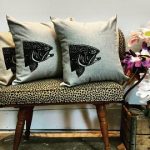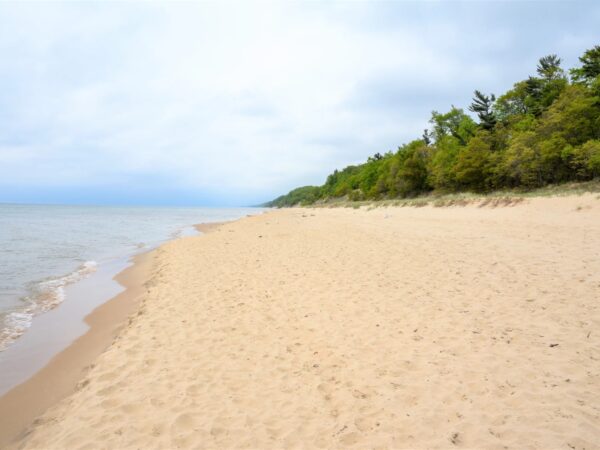
Pulling people closer to nature for fun (& occasionally profit)
Deciding what’s good art, bad art or not even art at all is like defining happiness, democracy or any other subjective topic: it likely all depends on who you’re talking to. But when it comes to Great Lakes art it may not be so difficult: people who love the lakes and its associated features mostly like all its art and artists.
The intersection of art and nature — especially now — is becoming more popular in the digital age where social media holds sway over the time and attentions of so many. And for artists working to gather audiences, and grasp the natural world through paints and lenses, the Internet can be a crucial link.
“Realism is probably better suited than abstract art or Impressionism when it comes to influencing audiences to appreciate nature, wildlife and landscapes,” said Don Corrigan, professor of media law, global and environmental journalism at Webster University. “Most artists, at least until recently, have declined to concede their art has any overt mission to ‘save nature’ or encourage appreciation.”
In fact, he said, in the serious art world it’s often been frowned upon for creators of fine art to be engaged in any sort of polemic. “It’s almost been considered gauche,” Corrigan said. “But that is changing as the crisis facing the planet with global warming becomes more pronounced.”
Artists and art, meet the public
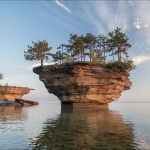 Michigan’s Stephen Huyser-Honig, 62, has been clicking away for the better part of his adult life. And lately he and his lenses have had a serious crush on Lake Superior.
Michigan’s Stephen Huyser-Honig, 62, has been clicking away for the better part of his adult life. And lately he and his lenses have had a serious crush on Lake Superior.
“I travel throughout the state, so I’m all over the place,” he explained. “But Lake Superior really gets my attention.” Huyser-Honig is one of the more fortunate artists in that he’s able to derive a livable income from his work. “Most of my sales come from art shows and about 85 percent of those sales are images that are water-related.”
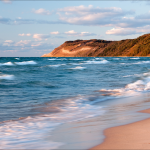 Huyser-Honig’s big-water photos feature the lake, its dunes and shores and its lighthouses, among other scenes. Just a hop and a skip inland, he zooms in on lake tributaries, their banks and waterfalls. Huyser-Honig says most people who buy his artwork already have an appreciation of the subjects. But, he said, connecting with the artwork, getting a piece of it into their hands and into their home might notch it up a bit. “I think people often choose works that have an emotional impact,” he said.
Huyser-Honig’s big-water photos feature the lake, its dunes and shores and its lighthouses, among other scenes. Just a hop and a skip inland, he zooms in on lake tributaries, their banks and waterfalls. Huyser-Honig says most people who buy his artwork already have an appreciation of the subjects. But, he said, connecting with the artwork, getting a piece of it into their hands and into their home might notch it up a bit. “I think people often choose works that have an emotional impact,” he said.
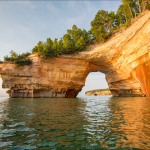 When he’s seeking a certain subject or shot, Huyser-Honig said, it’s not the end of the world to either not find it or miss it. “I’m really just out to enjoy the outdoors, to be in nature and the natural cornucopia which awaits you, just waiting for something to happen.”
When he’s seeking a certain subject or shot, Huyser-Honig said, it’s not the end of the world to either not find it or miss it. “I’m really just out to enjoy the outdoors, to be in nature and the natural cornucopia which awaits you, just waiting for something to happen.”
Inland artists take lake subjects home to their studios
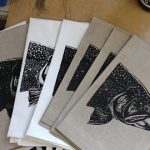 Portersville, Pennsylvania isn’t exactly considered a hot-spot of the contemporary art world. But the tiny wide-spot-in-the-road, 100 miles south of Erie, is just where Tiffany London creates her piscatorial pieces. And she’s just getting started.
Portersville, Pennsylvania isn’t exactly considered a hot-spot of the contemporary art world. But the tiny wide-spot-in-the-road, 100 miles south of Erie, is just where Tiffany London creates her piscatorial pieces. And she’s just getting started.
“In 2014 I painted a small watercolor of a rainbow trout and sent it to my father-in-law for Father’s Day,” she explained. “He liked it so much he asked me to paint five more for his friends and clients as Christmas gifts.”
And that’s how it all began. London said she specializes in trouts and as well, spends plenty of time pursuing them with a long rod and hand-tied flies.
“They’re my first fish love,” London said. “They’re the first fish species I ever caught and they remind me of my home-away-from-home, Montana.” She describes catching, and painting, trouts in an almost spiritual tone.
“Each catch and painting are special, but so are the days when I go out and try to tease them onto my line and don’t catch any, those are special, too,” she said. “I enjoy the process of fishing – the catch is just as exhilarating as releasing them.” London cites a delicate balance between humans and nature. And a photo (which leads to a painting) of a released fish adds to the big picture. “They will grow, reproduce and maybe someone else will get the thrill of catching them again.”
A daily shot of adrenaline for artist and Facebook folks
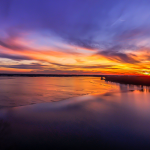 Paul Carpenter’s developed a great fan base on social media with his photographs. The 59-year-old Marblehead, Ohio resident has been snapping photos for years – including before the digital revolution. He currently utilizes a Pentax digital SLR, and sometimes a drone, for his work. And while he’s doesn’t earn a living, he does sometimes sell his work. And he’s probably the most-watched artist in the region.
Paul Carpenter’s developed a great fan base on social media with his photographs. The 59-year-old Marblehead, Ohio resident has been snapping photos for years – including before the digital revolution. He currently utilizes a Pentax digital SLR, and sometimes a drone, for his work. And while he’s doesn’t earn a living, he does sometimes sell his work. And he’s probably the most-watched artist in the region.
“I do seem to have developed quite a following,” Carpenter said. “When I grew up we had a summer cottage here. I just developed this thing where I have to be near a large body of water.”
That’s a feeling a lot of Great Lakes residents know well.
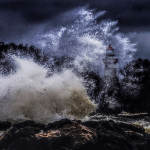 Carpenter posts, almost every day on Facebook, at least two or three photos of the lake, its tributaries, its lighthouses or harbors. And when asked if he believes images posted on Facebook actually contribute to conservation, Carpenter didn’t hesitate.
Carpenter posts, almost every day on Facebook, at least two or three photos of the lake, its tributaries, its lighthouses or harbors. And when asked if he believes images posted on Facebook actually contribute to conservation, Carpenter didn’t hesitate.
“I believe with all my heart that it does help,” he said. “There’s so much negativity in the world. I just want to post beautiful images. When you post something like that, it can really make someone’s day.” Carpenter said he believes when people see images they love, they’re more naturally inclined to treasure the subject.
Melissa Gossman, who doesn’t live in the area but does spend time during warmer months there, agrees. “It really reminds me of how beautiful it is there and why we actually want to move up there,” she explained. “I love to see the pretty pictures in the winter and it gets me excited because even though we’re not there, we get to be a part of it.”
![]() Carpenter doesn’t just focus on the nice-looking stuff, either. He rarely misses a chance to get out in inclement weather when the lake’s all blown up and muddy. And according to Gossman, it’s all good. “All of them have their personality good and bad,” she said. “They’re all very beautiful either way.”
Carpenter doesn’t just focus on the nice-looking stuff, either. He rarely misses a chance to get out in inclement weather when the lake’s all blown up and muddy. And according to Gossman, it’s all good. “All of them have their personality good and bad,” she said. “They’re all very beautiful either way.”
Gossman ran into Carpenter last year on the lakeshore, both checking out ice and snow. “When I talked to him he was a very humble person, very nice. I’d love to have many of his pictures in my home.”
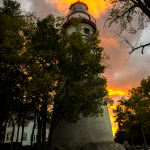 Gossman admits to being a serial “liker” or “lover” his photos. And if something truly moves her, she just has to comment on the post. Carpenter’s Facebook posts always draw reaction, and sometimes garner hundreds of likes, loves and shares each day. One recent post spread like wildfire and received nearly 1,000 reactions and shares.
Gossman admits to being a serial “liker” or “lover” his photos. And if something truly moves her, she just has to comment on the post. Carpenter’s Facebook posts always draw reaction, and sometimes garner hundreds of likes, loves and shares each day. One recent post spread like wildfire and received nearly 1,000 reactions and shares.
According to Carpenter, art is what you make it. “Whether it be a sculpture or an image or a painting, the only power it has is what someone’s willing to give it.” And he said, clicks and likes and shares, on Facebook, means the work has some power.
Photography the number one medium for Great Lakes art
Corrigan said photos are front and foremost in the digital age, especially conducive to spreading the vibe – especially with social media and smart phones. While traditional art is great, photos are super-relevant and spread like wildfire.
“Photography has really come into its own as an influential artistic medium. I’ve personally viewed openings that have chronicled species extinction, effects of climate change in the Northern hemisphere and wildlife conflagrations.”
Corrigan said long before the Internet was used by the masses, National Geographic Magazine really helped pave the way for photography as fine art with important messages.
Hey – don’t forget about video
Julia Christensen, associate professor of integrated Media at Oberlin College, recently utilized a small army of Go-Pro video cameras with live and time-lapsed feeds to capture Lake Erie during the winter.
In March, 2018 she installed cameras on Ohio State University’s Gibraltar Island, where Stone Lab is located, and one at The University of Toledo’s Lake Erie Center. Her project, Waiting for a Break, chronicled the coming and going of storms, sunrises and sunsets and ice. Viewers could see the work at a kiosk on Public Square in downtown Cleveland, watch online or at an exhibition at the SPACES Gallery in Cleveland.
“By using networked cameras to view the surface of the water over the course of the entire winter, I hoped to get a sense of the slow, constant changes of the ice at a time of year the islands are not easily accessible,” Christensen said. “The project created a platform for a discussion about the health of the lake, which was lively in the news and media, as well as the gallery and in public space.”
She said the Waiting for a Break installation and feeds were meant to ask questions or change questions people are used to, not to answer questions or tell people what to think.
“I wanted to provide a view of the lake at a time of year when most people turn away from it: the dead of winter,” Christensen said. “What we found, of course, is that the lake is quite alive, even in those dark months.”
Over the course of the winter, thousands of people stopped to view the video feed at Public Square. She said the piece offered the public a unique opportunity to discuss the issues surrounding lake ice, which in recent years has become less prevalent over winter.
Great Lakes art and artists probably closer than you think
Whether seeking academic discussion starters or just great images of really great lakes, paintings or other works featuring the precious waters and all their accompanying beauty, it’s likely there are artists and art close to you. From local galleries and boutiques to websites, Great Lakes art is everywhere. And much of it may be just a click away waiting for you to engage.
Featured Image: Kiosk streaming live feeds from cameras 247 on Public Square, Cleveland. Provided by Julia Christensen via James Proffitt



